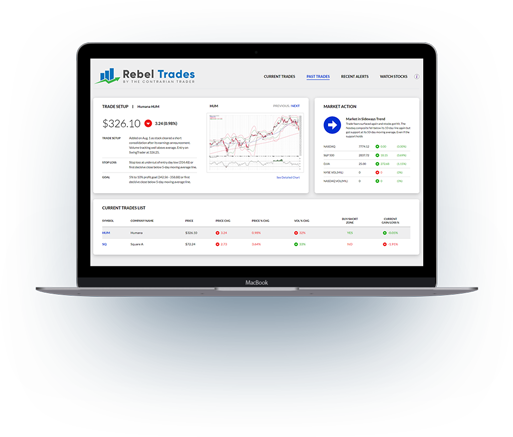Introduction
The concept of Unlocking America’s Reindustrialization has gained significant attention in recent years, presenting a path to prosperity and economic growth. As the global landscape shifts and economies evolve, it becomes essential for nations to reassess their industrial strategies. In this article, we delve into the intricacies of Unlocking America’s Reindustrialization and explore the best investment opportunities to achieve sustainable growth and prosperity.
The Relevance of Reindustrialization
Unlocking America’s Reindustrialization is a vital step to reposition the nation as a global economic powerhouse. As technology advances and industries evolve, reindustrialization enables the United States to bolster its manufacturing sector, boost job creation, and enhance overall economic resilience. It offers an opportunity to capitalize on innovative technologies, sustainable practices, and a skilled workforce, ensuring a competitive edge in the global market.
The Driving Forces of Reindustrialization
In this section, we examine the driving forces that push the need for Unlocking America’s Reindustrialization:
1. Technological Advancements and Automation
The ever-evolving landscape of technology has revolutionized industries worldwide. Reindustrialization allows American businesses to leverage cutting-edge technologies like artificial intelligence, automation, and IoT, streamlining production processes and enhancing productivity.
2. Supply Chain Resilience
Recent global events have highlighted the importance of resilient supply chains. By reindustrializing, the United States can reduce its dependence on foreign markets and strengthen its supply chain, ensuring stability in times of crisis.
3. Sustainability and Green Initiatives
Unlocking America’s Reindustrialization also aligns with the growing emphasis on sustainability and eco-conscious practices. Investing in green technologies and environmentally friendly processes can lead to a more sustainable and eco-friendly industrial sector.
Promising Sectors for Investment
4. Clean Energy and Renewable Resources
The clean energy sector presents an excellent investment opportunity in the reindustrialization drive. From solar and wind power to biofuels, investing in clean energy not only supports sustainable practices but also fosters job creation and technological advancements.
5. Advanced Manufacturing
Advanced manufacturing, including 3D printing, robotics, and nanotechnology, offers a promising investment avenue. These technologies enhance production efficiency and foster innovation, contributing to economic growth.
6. Biotechnology and Pharmaceutical Industries
Investing in the biotechnology and pharmaceutical sectors holds immense potential. Advancements in medical research and drug development can revolutionize healthcare while driving economic gains.
7. Infrastructure Development
A robust infrastructure is the backbone of a thriving economy. Investing in infrastructure development, including transportation, telecommunications, and utilities, can pave the way for economic expansion and improved quality of life.
8. Cybersecurity
As digitization continues to permeate every aspect of modern life, cybersecurity becomes critical. Investing in cybersecurity companies and technologies can protect businesses and infrastructure from cyber threats, fostering trust and stability.
The Role of Government and Policies
Unlocking America’s Reindustrialization requires a collaborative effort between the government, private sector, and other stakeholders. Supportive policies and incentives play a pivotal role in driving investments and innovation:
9. Tax Incentives
The government can offer tax incentives to businesses that invest in key reindustrialization sectors. This encourages capital flow into critical industries and stimulates growth.
10. Research and Development Funding
Investing in research and development helps foster innovation and technological advancements. Government grants and funding can propel industries forward and create a culture of innovation.
11. Trade Policies and Tariffs
Strategic trade policies and tariffs can protect domestic industries and create a level playing field for American businesses, enabling them to compete globally.
12. Skilled Workforce Development
A skilled workforce is the backbone of successful industries. Government initiatives and partnerships with educational institutions can bridge the skill gap and prepare the workforce for the jobs of the future.
Overcoming Challenges in Reindustrialization
While Unlocking America’s Reindustrialization presents numerous opportunities, it also comes with challenges:
13. Economic Uncertainty
Economic fluctuations can impact investment decisions and business growth. Evaluating risk and devising strategies to navigate uncertainties is crucial for successful reindustrialization.
14. Global Competition
As the United States reindustrializes, it faces competition from other industrialized nations. Fostering a competitive advantage through innovation and efficiency is essential.
15. Regulatory Compliance
Navigating regulatory frameworks can be complex. Complying with environmental, labor, and industry-specific regulations is vital for sustainable and ethical growth.
16. Skills Mismatch
The rapid pace of technological advancements may create a skills mismatch in the workforce. Upskilling and retraining programs can address this issue and ensure a skilled labor pool.
Frequently Asked Questions (FAQs)
- Is Reindustrialization only about manufacturing?Reindustrialization encompasses more than just manufacturing. It involves revitalizing various sectors with a focus on technological advancements and sustainability.
- How does Reindustrialization impact job creation?Reindustrialization can lead to a surge in job opportunities, particularly in advanced manufacturing and emerging industries like clean energy and biotechnology.
- What are some key technological advancements driving reindustrialization?Technologies such as automation, artificial intelligence, and 3D printing are driving the transformation of industries and supporting reindustrialization efforts.
- Can small businesses participate in reindustrialization?Absolutely! Reindustrialization offers opportunities for both large corporations and small businesses to innovate and grow.
- How can investors assess the potential of reindustrialization projects?Investors should conduct thorough market research, assess the viability of technologies involved, and evaluate government support and policies for these projects.
- What role does sustainable development play in reindustrialization?Sustainable development is crucial in ensuring long-term prosperity. Investments in green technologies and eco-friendly practices align with the principles of reindustrialization.
Conclusion
Unlocking America’s Reindustrialization holds the key to a prosperous and resilient future. By investing in promising sectors, fostering innovation, and aligning policies for growth, the United States can regain its industrial prowess. Embracing technological advancements, sustainability, and a skilled workforce, the nation can carve its path to prosperity in the global economy.



